Artists on Mitchell: Ruby Chishti
“Joan Mitchell taught me to trust the storm.”...

Michaela Pilar Brown is an artist based in Columbia, South Carolina, and a 2024 Joan Mitchell Fellow. We interviewed Brown about her work and creative practice in February 2025. The following is excerpted and edited from a transcript of that conversation.
I predominantly make public-facing work, including installation, performance, and photography that has a performance element, but my practice also includes object making, collage, and paintings. I'm a maker and I come from makers. My grandfather made every tool he ever used. He built his own house. My father never called a repairman, even when he should have. There are other artists in my immediate family, so it's a part of who I am culturally. Making is a part of how we communicate, how we move and function, how we live our lives in our homes.
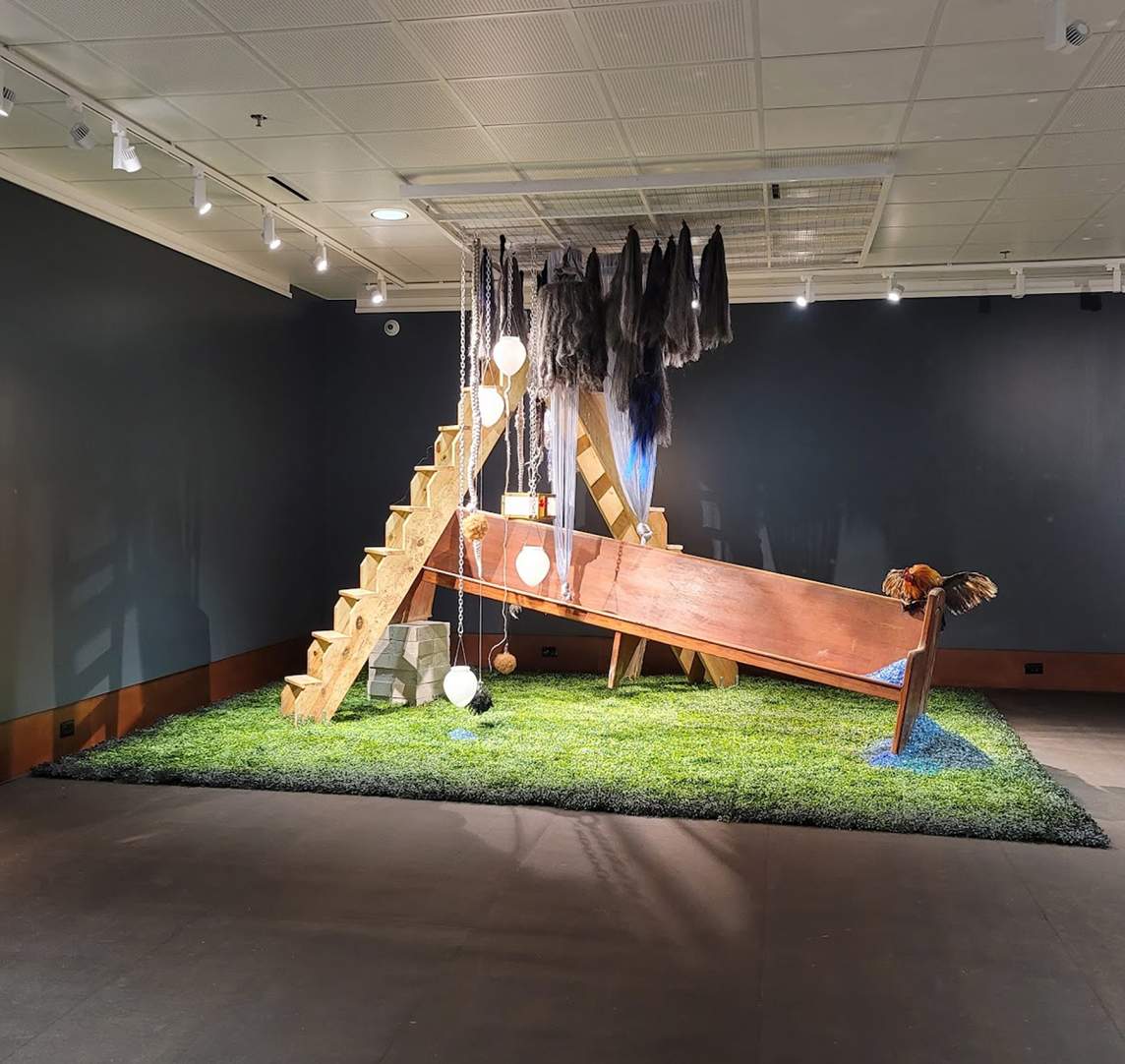
After studying sculpture at Howard University and establishing my art practice, I stopped working for almost a decade. I moved to the Carolinas to assist with the care of my father, who was suffering from dementia. I thought I would continue my practice right alongside caregiving, but it was really overwhelming and it took precedence. So for nearly a decade, I wasn't actively pursuing a career in the arts. I was always making things, but I had trained as a sculptor, and I thought I would be going after public commissions. I was leaning towards making this kind of minimalist metal sculpture.
I spent 10 years taking care of my father and the work that came about afterwards was so very different, so very personal. I had raised a child and buried a parent, and the stories that I wanted to tell were so much more personal, connected to my own family history. And that had to do with the landscape.
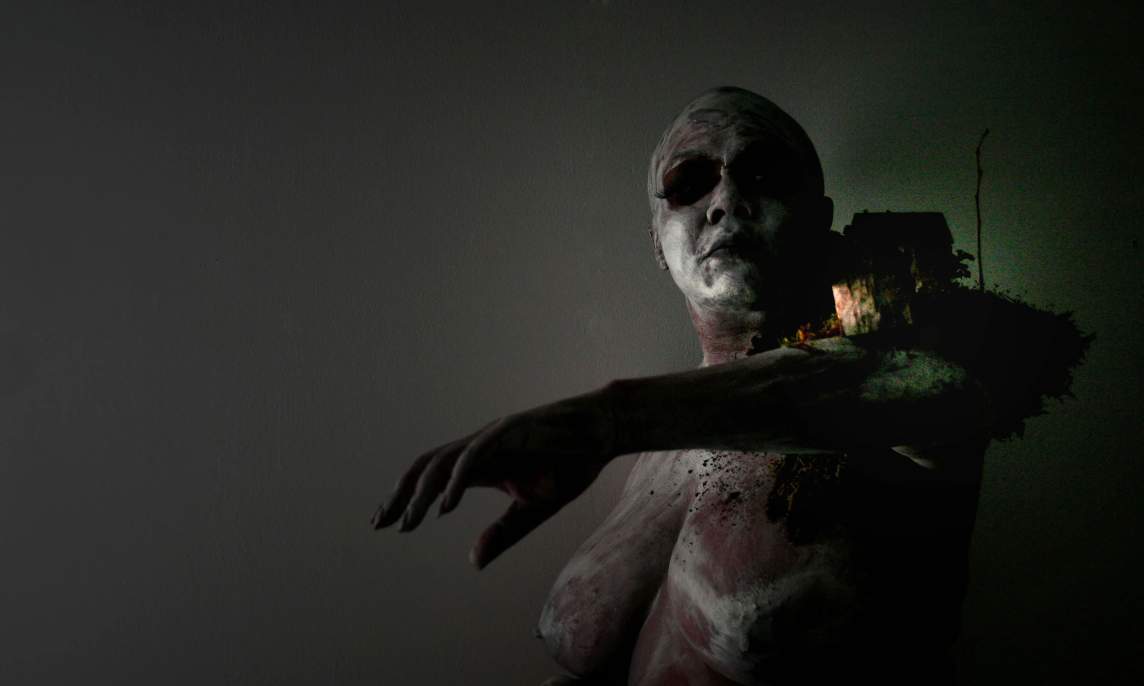
My family lives on 250 acres of land that has been in my family for several generations, going back to an Irishman who immigrated to South Carolina in 1775. Since my father was suffering from memory issues, I really started digging into what our history was, how race impacted that history, and how we thought of ourselves as people. When I went back to my practice, I was 10 years older, 40 pounds heavier, really thinking about how this body moves through the world and how it is impacted by the history of this particular landscape. So I started photographing myself in the landscape and really thinking about my ties to this red clay. At first, it was my body in performance in front of my own camera. My body in performance in front of an audience came later.
I'm really interested in conversations that advance the cause of Black folk. How do we move forward? How do we move towards liberation, real liberation? How do we find real freedom—freedom in our bodies, freedom in our places of worship, freedom in where we live? Part of examining my own family's property, the church that sits there, and the cemetery that's there was about talking about what it means to have a free Black space, what it means for Black people to feel safe and free and fully themselves. So I'm interested in carrying those kinds of conversations forward, not as a way of centering my own particular life, but as a human story.
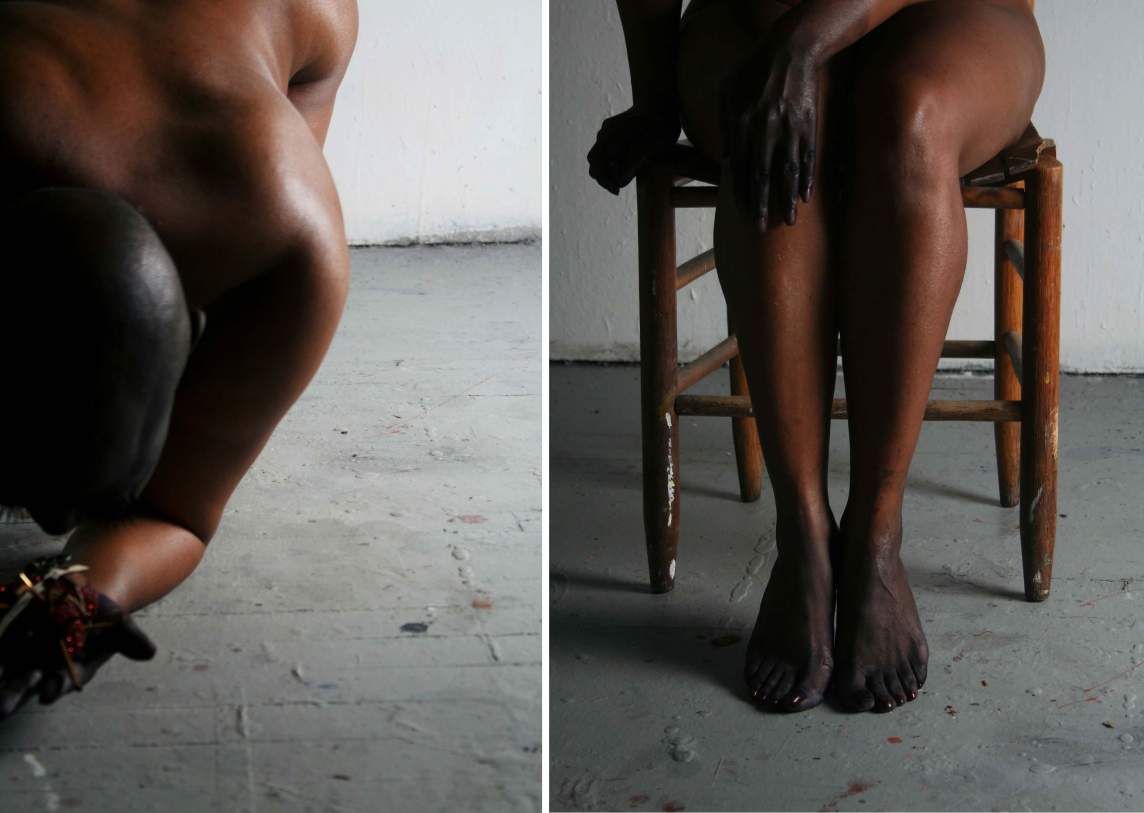
I can zero in on my own story and its universe, but I'm also interested in issues attendant to how Black women move through the world. What happens to our bodies? What are the questions? What are the policies and politics that affect how we live? How do we raise our children? How do we do that comfortably? How do we find and get what we need? And how do we interact in a world that's changing rapidly?
I have a 16-year-old, and recent politics make me worry so much more than I ever did before, but I'm interested in answering questions for her. How do I help her find freedom? I'm also just interested in how we get along as humans, how different cultures clash and come together and embrace each other and clash more. What does that story look like over years, over decades, over centuries? What is that story and how do we move?
Some of the work that I feel most moved by still is a piece from 2012 called Motherwound, which was a dual exhibition held in two different institutions in my city. I was inviting my audience to a microphone to share stories of trauma and grief, and then I was writing those stories on my body. It’s this idea of mark-making to tell stories. I had been collecting objects for the installation that project was housed in for a couple of years, and it included old Civil War maps and a radio from the '40s, and a reel to reel that I played with as a child, that was my father’s.
When I think about that project, I think that's the way I want to move and operate and do performance. I want it to be very direct. I want it to be person to person. I want to experience what my audience members are experiencing. I want us to have the experience together. I don't want to just be on display in front of them. I wanted to feel people's breath. I wanted to feel the warmth of their skin, and that's the kind of exchange that's really powerful for me. I keep reaching back to that experience, Motherwound, to duplicate it, at least to duplicate the feeling, this idea that people are open and vulnerable and sharing and that it's held with honor.
And there's some lessons learned there, too. I was making these performances and not making space for myself afterwards, not understanding the weight of carrying other people's grief. So now, part of the practice is, how do I process the grief—my own grief and grief that I'm carrying for other people? And that comes out later and differently, but it gets processed and becomes a part of the work as well.
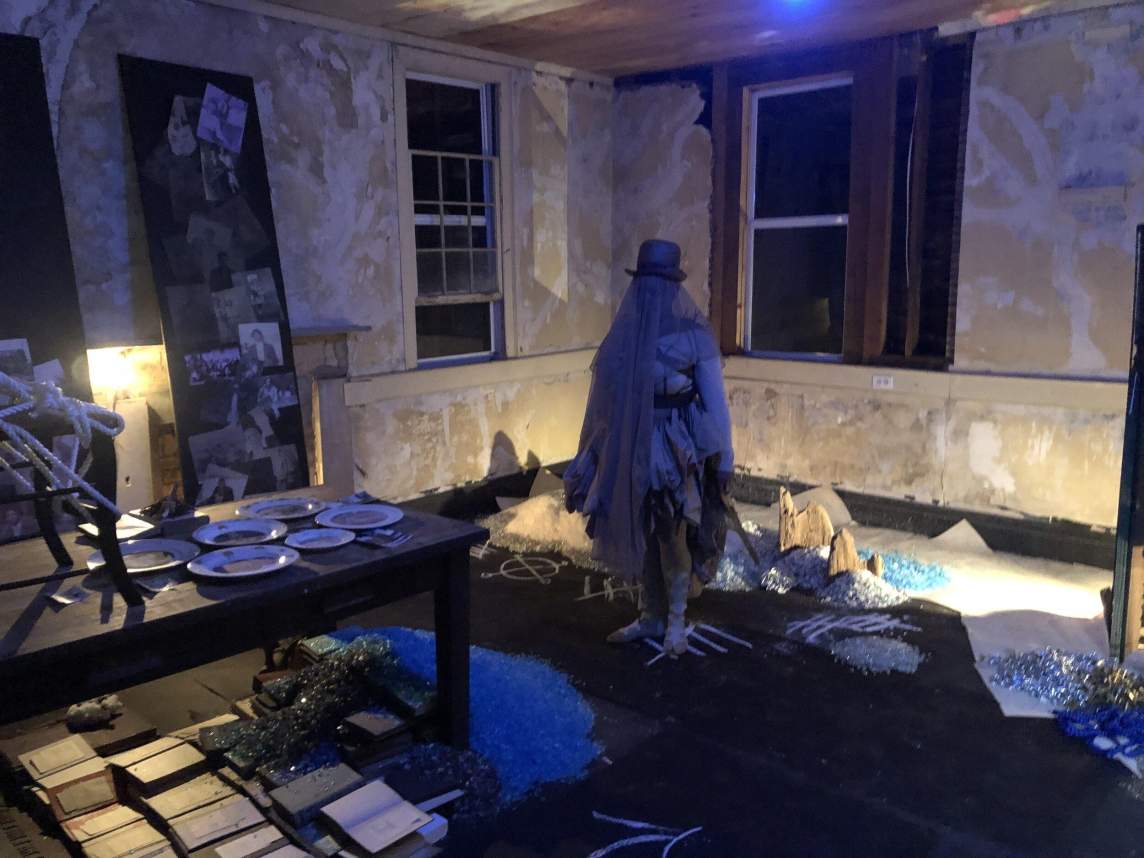
When I talk about my practice, I'm always talking about the objects and the ephemera from the performance. But I think another part of the practice that's important to me are the conversations that I have publicly. I've been moderating an unmoderated conversation, if that makes sense. I gather people and whoever shows up determines what we talk about. I facilitate more than moderate, just kind of guide them through that. I've been doing it for two-and-a-half years, once a month, and those conversations have been really impactful in my community. So I think that's a part of the practice too—how we talk to each other, how we sort out our problems. It's not a safe space, but it is a brave space. You can be loud and wrong, but it will be corrected and it'll be met with grace. I think I'm trying to help my community figure out how to talk to each other in a meaningful way.
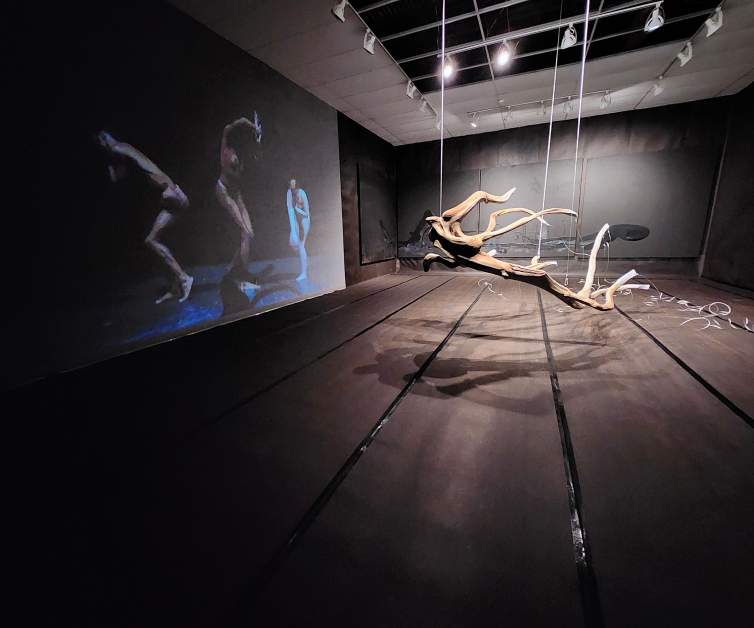
I'm a little bit of a gypsy. I work on the land. I'm often culling trees and objects from this property that my family's occupied for quite a long time. I'm working outside, but I also have a commercial space that I operate as a gallery, and I also use it as a work space as well. And I'm a tinkerer, so I put in a load of laundry and I go to my table and I make something. I have some dinner and I go back to my table and I make something else.
For many years before COVID, I was heavily dependent on residencies. It's a chance to get away, to work in a larger space, often to plan something larger than what I could do in my own space. COVID shifted that quite a bit. And then in 2022, I took on a commercial gallery, so I'm less able to move around. But the gallery does feel like an extension of how I move in the world as an artist. Even the programming around the exhibitions has to do with how I move in community, how I can make space for other conversations and other voices.
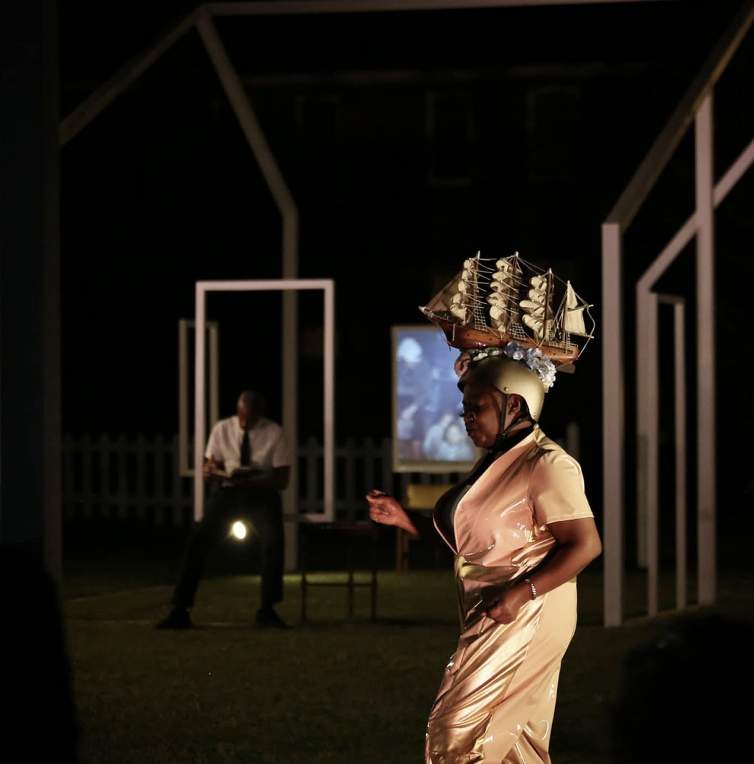
My process is different for every project. It starts with a question, usually, and then conversations and writing. I write my way in and I write my way out. I write towards my own ideas, then I research. I'm often dealing with an object. I make assemblage art, so I'm often collecting things and living with them for a long time. I might collect a series of objects that I think have some relationship to each other and they'll be in my possession for years before they actually become a piece of art, just kind of telling me what their story is and gaining more stories, as they move around my spaces. I have a tendency to move objects around. My husband hates it. Things are constantly in flux.
So there’s a gathering of objects and then some sketching. I'm often making objects that will go into a larger space, then I occupy a studio space. I am gathering and planning all the component pieces, imagining how they live together, setting out samples of how they live together. I find myself moving more towards collaborative work, which changes the process entirely. I’ve worked with musicians, vocalists, and dancers. And now I'm interested in lighting design and I'm moving my craft forward.
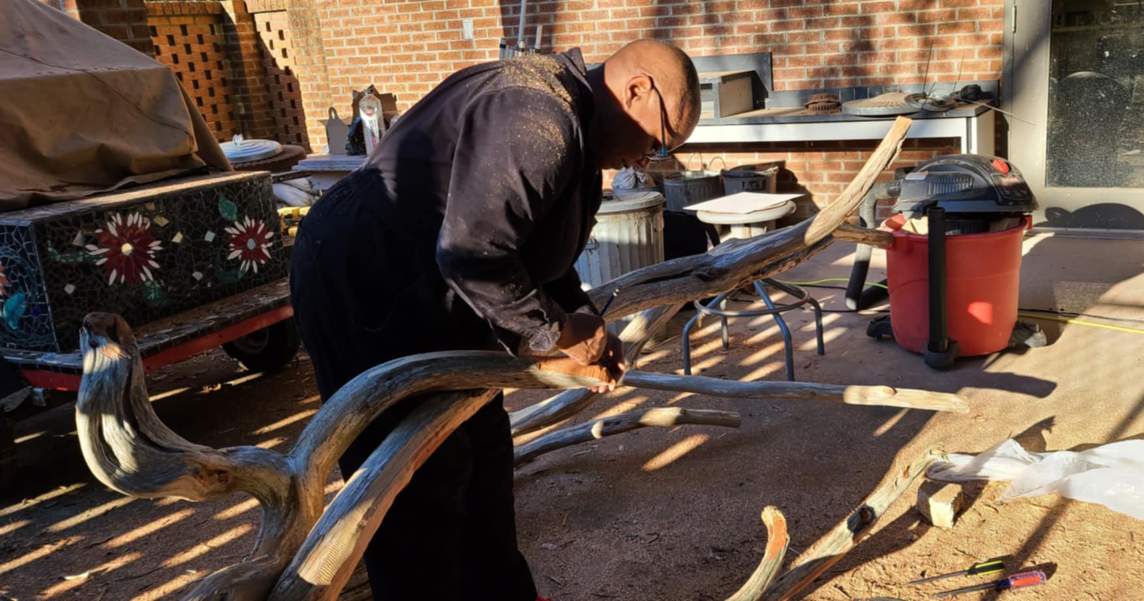
I'm currently working on an indoor memorial garden for five matriarchs in my family. My mother died on March 21st, 2020. It was one day before we went into quarantine, and our grief process was really stunted. It was before people were doing video funerals, and so it really just didn't happen. I often feel like she wasn't properly memorialized, and she also was the last of her five sisters—each of whom shaped me in such a way. They're such unique, individual personalities, but also their lives represent a shared history for Black women starting in the early 1900s and moving forward.
I'm interested in telling the stories of my mother and her sisters, talking about what it means to have been a Black woman in World War II, what it means to come through the Civil Rights era—all of that history that encompasses their lives, that's included in the photographs I own and the things that they left behind, things that were precious to them, some of them really valuable and some of them not, but valuable to me. I have a solo exhibition in the fall, at Redux Contemporary Art Center in Charleston, and the memorial will be a part of that exhibition. It will include video and performance and music and all of these things. Visitors will walk in and have a full-body experience as they move through the exhibition. I hope it'll be very experiential.
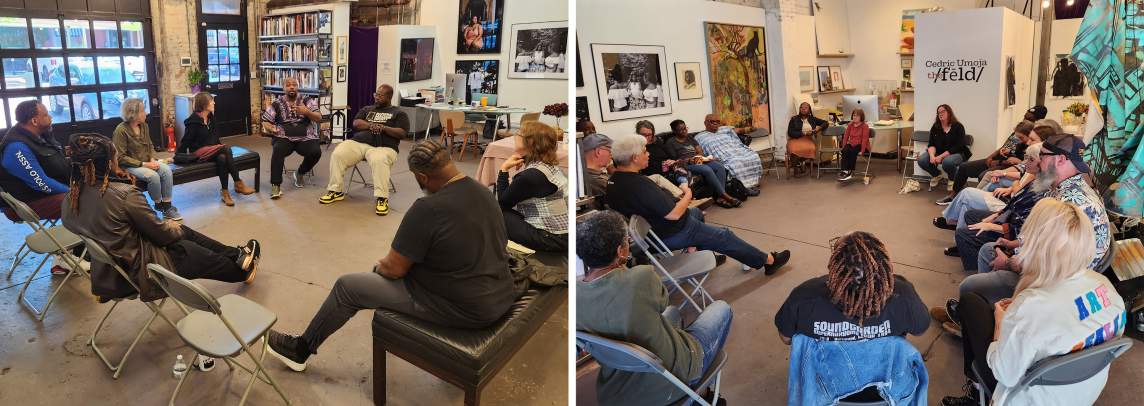
I also have a really full schedule in the gallery for the next year with a lot of public conversations. I'm starting a project called Critical Shift, which is a monthly conversation for artists and scholars to share developing work in an environment of inquiry and support. And I do what we call Mike's Mugs, which is a coffee klatch that the arts community can come to once a month. My husband, who's a theater professional, has started storytelling in the gallery on Saturdays, the first Saturday of every month. So we're inviting families in to make arts and crafts and listen to storytelling.
This feels like a period where we need to lean in. Our politics feel really fraught. I think we need community and we're trying to build community. There was a period where I was deeply engaged in caregiving, but it was really isolating. I was living on 250 acres of land. I didn't have to see anybody who wasn't related to me if I didn't make an effort to. I could really hide out and it felt like that for a long time. But I think that kind of isolation is dangerous. It's not good for families, it's not good for individuals. Just in the last five years with COVID, I saw people become really, really introverted who weren't previously, who hardly come out, who were not engaged, who feel very alone. And I want to impact that if I can, to find a way for people to have community, to experience mutual aid, to know what that is, to have access to it. It's important to me. I think that's how we survive.
Interview and editing by Jenny Gill. Learn more about Michaela Pilar Brown’s work at michaelapilarbrown.com.